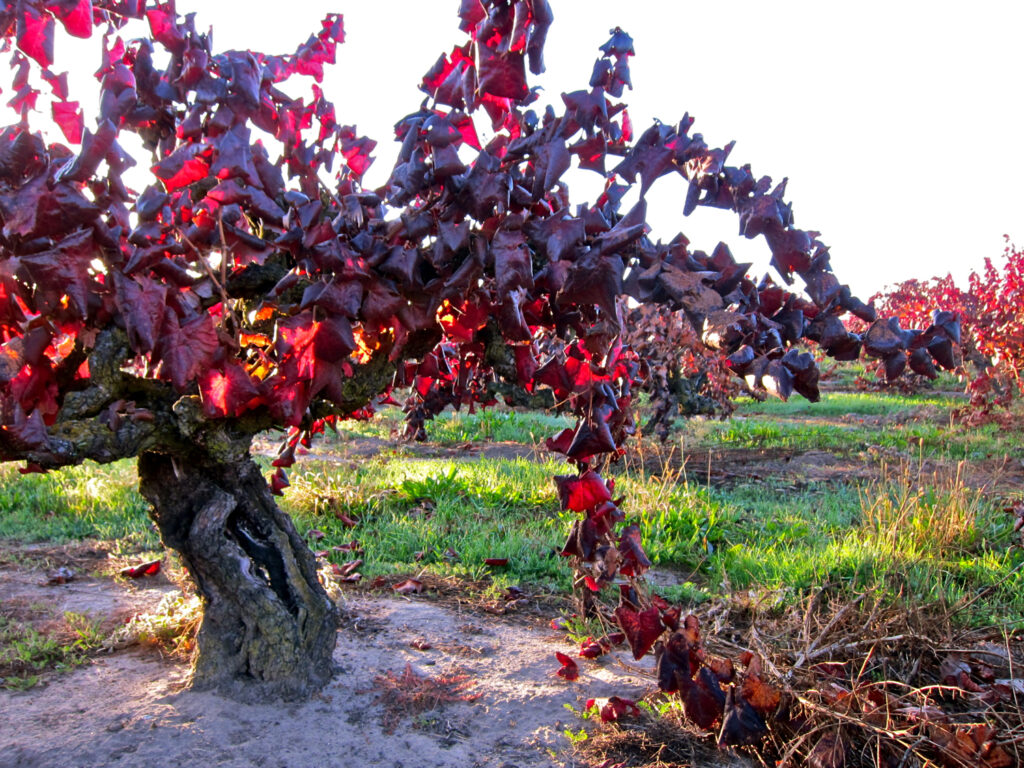Red wine
Vitis vinifera L.
Vitaceae
Vine grows in the wild, Vitis vinifera L. subsp. sylvestris, and is also called “lambrusque”. It is a liana that thrives in wet forests where it can attach itself to young trees and grow with them as vine does not hook itself to grown trees’ trunks. It can reach 30 m in length. This subspecies has become very rare in France due to clearing or drainage of wetlands.
This wild vine is the nearest ancestor of the cultivated vine, Vitis vinifera subsp. SativaThis vineyard, which is the result of a thousand-year-old crop selection, is one of the oldest plants that has been domesticated by man.
The first vestiges of wine were discovered in Georgia and date from – 5000 BC. As for the first representation of the process of vinification, it is found on an Egyptian bas-relief dating from -2500 BC. The technique of winemaking went from the Egyptians to the Greeks and the Romans, who exported the vine plant all over the Mediterranean basin.
In France, it was in 600 BC that the Greeks implanted the vineyard in Massalia, which became Marseilles. Initially confined to the coastal zone, the cultivation of the vine gradually spread. It reaches the Rhone Valley in the 1st century, Burgundy and Bordeaux in the 2nd century, then the Loire Valley in the 3rd century and finally Champagne and the Moselle valley in the 4th century. The terracotta jar is gradually abandoned for the barrel, invented by the Gaulois, more practical for the conservation and transport of wine.
Starting in the Middle Ages, the desire to improve production became constant, both in terms of production and processing, often through political measures. In the year 800, Charlemagne wrote an ordinance to improve the quality of wine: “Let our stewards take charge of our vineyards under their ministry and make them work well, put the wine in good dishes and take all precautions so that it is not spoiled in any way. “
Almost 1000 years later, in 1863, Napoleon III asked Louis Pasteur to carry out research on the diseases of the vine and the process of vinification: it was the birth of modern oenology. In the course of his research, Pasteur observed that heated wine is better preserved, and the technique of pasteurization is born.
In herbalism, the “red” vine leaf is used, which refers to the red-burgundy coloring taken by the leaves of certain types of vines such as the “dyer of the Cher”, the alicante Henri Bouschet or the Gamay Fréaux. These varieties, which often give colorful wines but without finesse, are in decline. In France, alicante occupies only 3826 hectares in 2011, compared to 10,000 hectares in 200, a decrease of more than 60% in 10 years. As an example, Merlot, which is one of the most common varieties, covers 114 015 hectares.
If phytotherapy uses only dyeing varieties, it is because the pigments are responsible for the beneficial activity of the plant. These compounds reduce the permeability of the blood capillaries and improve their resistance. The result is a vein-tonic action, protective of the blood vessels and anti-edematous. This is why the red vine leaf is used in disorders of the blood circulation: heavy legs, varicose veins, hemorrhoids.
The active ingredients of the vine, also present in grapes and in wine, could explain in part the “French paradox”: despite a relatively rich diet, the incidence of cardiovascular disease among the French is half that of Americans and four times less than among the English.
